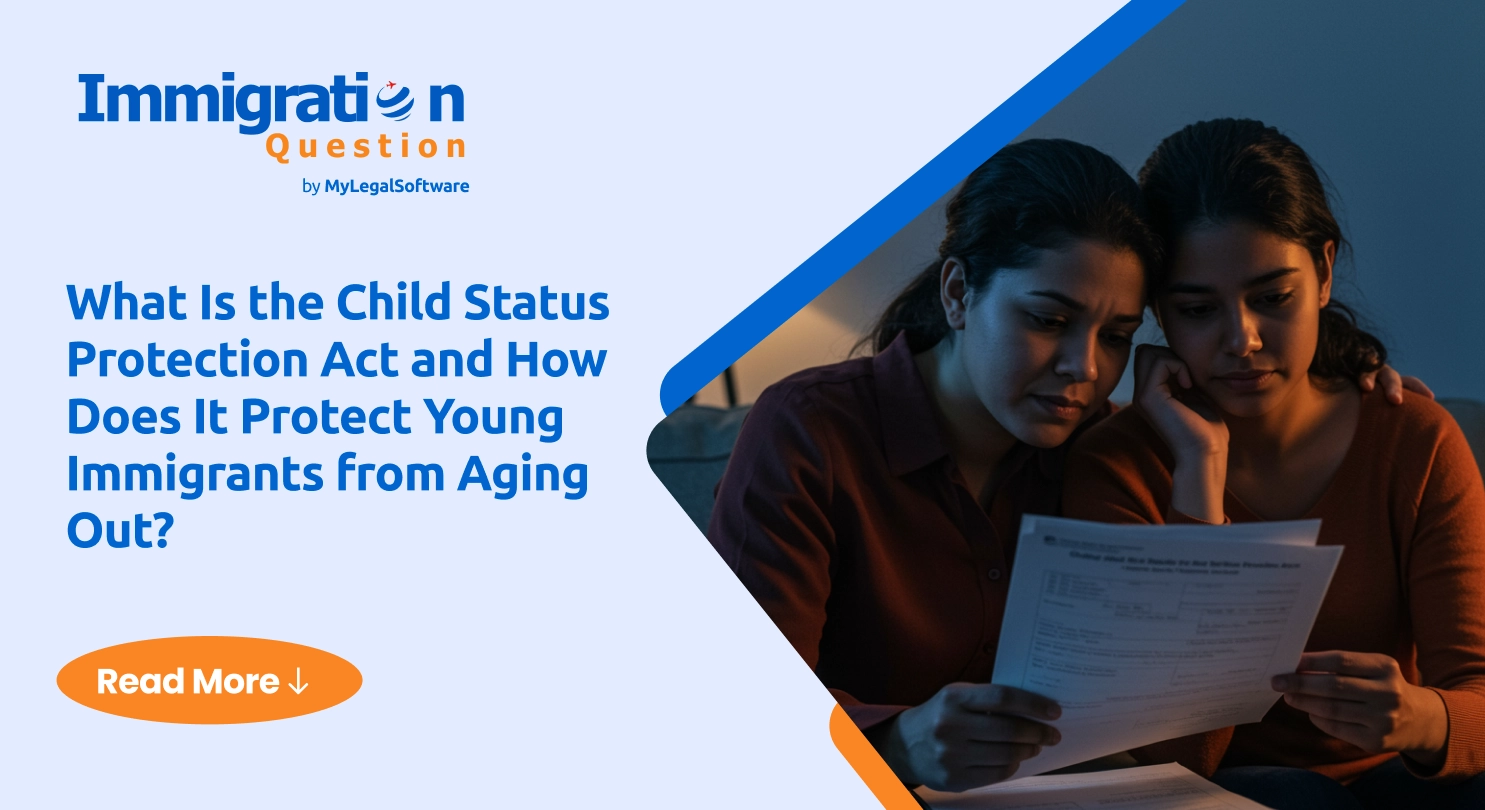U.S. immigration can be a slow, complex journey—especially for families with children. One of the biggest concerns is the possibility that a child could outgrow their eligibility during the process.
Imagine waiting years for your child’s immigration petition to be processed, only to discover they’ve “aged out” and lost eligibility just because they turned 21 while waiting. That’s exactly what the Child Status Protection Act (CSPA) protects against.
In this guide, we’ll walk you through CSPA explained in plain terms, who qualifies, how CSPA age calculation works, and why it’s essential for family immigration cases.
What is the Child Status Protection Act?
The Child Status Protection Act is a federal law enacted in 2002 that protects certain children from “aging out” of eligibility for immigration benefits when they turn 21. Before the CSPA, many children lost their eligibility for family-based or derivative immigration benefits simply because they turned 21 while waiting for their cases to be processed. This often happened due to significant government delays outside their control.
So, under U.S. immigration law, a “child” is defined as an unmarried person under 21 years of age. When someone turns 21, they’re no longer considered a “child” for immigration purposes. This transition from “child” to “adult” status is commonly referred to as “aging out.”
The Child Status Protection Act helps prevent this unfair outcome by creating a formula that essentially “freezes” a child’s age in certain circumstances. It simply allows some children to be considered “under 21” for immigration purposes even after their 21st birthday.
The law applies to various immigration contexts:
- Family-sponsored preference petitions (Form I-130)
- Employment-based petitions with derivative children (Form I-140)
- Diversity Visa lottery winners with children
- Refugee and asylee derivatives
Got immigration questions? Get clear, reliable answers—fast. Immigration Question connects you with trusted attorneys, so you’re never left guessing about your next step.
Who Does the CSPA Protect Children from Aging Out?
The CSPA provides immigration age-out protection for several categories of young immigrants:
1. Immediate Relatives of U.S. Citizens
For children of U.S. citizens, the CSPA offers the strongest protections. If a U.S. citizen parent files a petition for their child before the child turns 21, the child will remain classified as an “immediate relative” regardless of their age when the petition is approved or when they apply for a green card. This aspect of CSPA effectively freezes the child’s age at the time of filing.
2. Family Preference Categories
For family preference categories (such as the unmarried sons and daughters of permanent residents), the CSPA uses a formula to determine if a child can maintain “child” status:
3. Employment-Based Immigrants
Derivative beneficiaries CSPA protection also extends to the children of employment-based immigrants. Similar to family preference categories, the CSPA age calculation formula applies, potentially allowing children to remain eligible even after turning 21.
4. Refugee and Asylum Derivatives
Children of refugees and asylees receive protection if they are under 21 at the time the principal applicant files for refugee or asylum status.
How CSPA Age Calculation Works?
To use the Child Status Protection Act, you need to understand how age is calculated under the law. It’s not just about when the child turns 21.
The Basic Formula
For most preference categories, the CSPA age is calculated as:
- Determine the child’s age on the date when a visa number becomes available (when the priority date becomes current in the visa bulletin)
- Subtract the number of days the petition was pending (from the filing date to the approval date)
- If the resulting age is under 21, the child qualifies for CSPA protection
Example Calculation
Let’s illustrate with an example:
- Casey’s father (a permanent resident) files an F2A petition for her on January 1, 2020, when she is 19 years old
- The petition is approved on January 1, 2021 (pending for 365 days)
- A visa number becomes available on July 1, 2022, when Casey is 21 years and 6 months old (21.5 years)
- CSPA calculation: 21.5 years – 1 year (petition pending time) = 20.5 years
- Result: Casey’s CSPA age is under 21, so she remains eligible as a “child”
Additional Requirements
For the CSPA protection to apply, the child must also:
- Remain unmarried
- “Seek to acquire” permanent residence within one year of visa availability
- Be the beneficiary of a pending or approved petition
The “seek to acquire” requirement means filing Form I-485 (Adjustment of Status), Form DS-260 (Immigrant Visa Application), or Form I-824 (Action on an Approved Application) within one year after the priority date becomes current.
Limitations of CSPA Protection
The CSPA has important limitations families should be aware of:
- It doesn’t help if the child’s CSPA age calculation still results in an age over 21
- It doesn’t apply to certain nonimmigrant visa categories
- Marriage at any point disqualifies a child from CSPA protection
- The one-year “seek to acquire” deadline is strictly enforced (with limited exceptions)
When the Child Status Protection Act cannot help, families may need to explore alternative immigration options, such as a new petition in an appropriate category.
Final Thoughts
The Child Status Protection Act is a powerful protection in the U.S. immigration system—but it’s not automatic, and it’s not simple.
Understanding your child’s eligibility, the timing of visa availability, and how to properly apply for protection requires careful planning. In many cases, a child who would’ve aged out can still receive a green card for children over 21, thanks to CSPA.
Need help figuring it all out? Immigration Question can help. You can get clear answers from immigration experts in hours—and even connect with and get help from experienced attorneys. You don’t have to face the system alone.
Frequently Asked Questions About CSPA
Can the Child Status Protection Act help my child who already turned 21?
It depends on the visa category and how the CSPA age is calculated. If the calculated age is under 21 when the visa becomes available, protection may apply.
Does CSPA apply to stepchildren and adopted children?
Yes, as long as the legal relationship qualifies under U.S. immigration law and the petition was filed in time.
If my child is protected by CSPA, do they need a separate petition?
No. If the child is a derivative beneficiary and qualifies under CSPA, they can use the existing petition.
What types of petitions are covered by the CSPA?
Family-based, employment-based, diversity visa, refugee, and asylum petitions are all covered—though the rules vary by category.
What happens if my child’s CSPA age is still over 21?
Unfortunately, if the calculated age exceeds 21, they may no longer qualify as a child and might need a new petition.
How does visa availability impact CSPA protection?
CSPA protection only applies if a visa becomes available and the child seeks to acquire permanent residence within one year.









